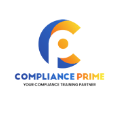Welcoming a new employee is more than just a meet-and-greet. It’s a strategic process that determines how well a new hire integrates into your organization.
Two terms often used interchangeably in this process are employee orientation and onboarding. But while both are essential, they serve different purposes and have vastly different impacts.
In this blog, we’ll break down what orientation and onboarding truly mean, how they differ, the risks of conflating the two, and how to implement them effectively.



What is Employee Orientation?
Employee orientation is the initial step of introducing new hires to the company. It usually takes place on the first day or week and serves as a short-term event to cover the basics that every employee needs to know before starting their job.
Key Components of Orientation:
- Company Overview: Introduction to the company’s mission, vision, and core values.
- HR Processes: Completing paperwork, reviewing policies, setting up payroll and benefits.
- Facility Tour: Showing new employees around the office, introducing departments and team members.
- Compliance and Legal Requirements: Reviewing safety procedures, harassment policies, and confidentiality agreements.
- Job Tools Access: Setting up company email, system logins, and necessary software tools.
Goal of Orientation:
The main goal is to handle administrative tasks and provide foundational knowledge so the employee can begin work. Think of it as getting someone through the front door and handing them the keys.
What is Employee Onboarding?
Employee onboarding is a comprehensive, long-term process designed to fully integrate new hires into the organization. It can span from a few weeks to several months depending on the company and the role.
Where orientation is an event, onboarding is a journey.
Key Components of Onboarding:
- Role-Specific Training: Teaching tools, workflows, and expectations specific to the employee’s job.
- Mentorship and Support: Assigning mentors or buddies to help navigate the culture and daily work.
- Feedback and Check-Ins: Regular performance reviews and feedback sessions.
- Cultural Assimilation: Helping the new hire understand and embrace company values and unwritten norms.
- Goal Setting and Growth: Aligning the employee’s personal goals with company objectives and setting a development path.
Goal of Onboarding:
The objective is to boost engagement, reduce time to productivity, and improve long-term retention. Onboarding helps employees feel connected, competent, and confident in their new role.
For a deeper look at onboarding, check out What Are the Four Phases of Onboarding.
What’s the Difference Between Orientation and Onboarding?
| Feature | Orientation | Onboarding |
| Duration | 1–5 days | Several weeks to 6+ months |
| Focus | Admin tasks & policies | Long-term employee success |
| Approach | One-size-fits-all | Tailored to role & individual |
| Outcome | Ready to start work | Fully integrated into the company |
| Interaction Level | Mostly informational | Collaborative and experiential |
Orientation is just the starting line. Onboarding is the marathon.
The Pitfalls of Confusing Orientation with Onboarding
Many organizations stop at orientation and mistakenly believe they’ve “onboarded” a new hire. This oversight can lead to multiple organizational and employee challenges.
Why Confusing Orientation with Onboarding is Bad:
- Information Overload
Dumping all company details, policies, and procedures in one sitting overwhelms new hires, leaving little retained knowledge or enthusiasm. - Poor Cultural Integration
Without long-term guidance, employees fail to understand company culture, resulting in disengagement and high turnover. - Lack of Role Clarity
Orientation rarely dives into role-specific expectations. This can lead to confusion, underperformance, and misalignment with goals. - Delayed Productivity
An employee may know the company policy but not how to navigate tools, workflows, or team dynamics essential to their role. - Early Attrition
Employees who feel unsupported are more likely to leave within the first 90 days. Strong onboarding reduces this risk significantly.
Learn how onboarding helps with retention in our article on How Onboarding Helps in Retention.
Common Mistakes:
- Treating orientation as the only onboarding activity.
- Failing to assign mentors or follow up after day one.
- Neglecting to customize onboarding by role.
- Ignoring feedback from new hires on the onboarding experience.
Benefits of Orientation and Onboarding
Orientation Benefits:
- Quick administrative setup
- Basic policy and procedural knowledge
- Legal and compliance safeguards
Onboarding Benefits:
- Increased employee engagement and morale
- Higher retention rates
- Faster time-to-productivity
- Stronger alignment with company goals
For tips on creating an onboarding process that delivers results, read our blog on How to Create an Effective Onboarding Program for Your Business.
Tips for Successful Employee Onboarding and Orientation
- Start before day one: Send welcome emails, reading material, or a video tour in advance.
- Break it into phases: Spread learning over weeks—explore the four onboarding phases.
- Assign mentors or buddies: Personalized support helps build confidence.
- Incorporate feedback loops: Adjust the program based on real feedback.
- Celebrate milestones: Acknowledge 30/60/90-day achievements.
- Stay human: Mix formal training with casual team interactions.
Looking for more practical advice? Don’t miss these onboarding tips to help employers and employees.
Final Thoughts
Employee orientation and onboarding are both necessary—but they’re not interchangeable. While orientation gets new hires in the door, onboarding ensures they thrive in your organization.
Understanding the distinction and implementing each with intention will lead to happier, more productive employees and a stronger organizational culture. You can also enhance your strategies by attending our insightful human resources webinars that cover everything from onboarding best practices to retention tactics.
Are you ready to move beyond the basics and build a truly effective onboarding experience? Start today by reviewing your current approach and aligning it with your long-term talent goals.


